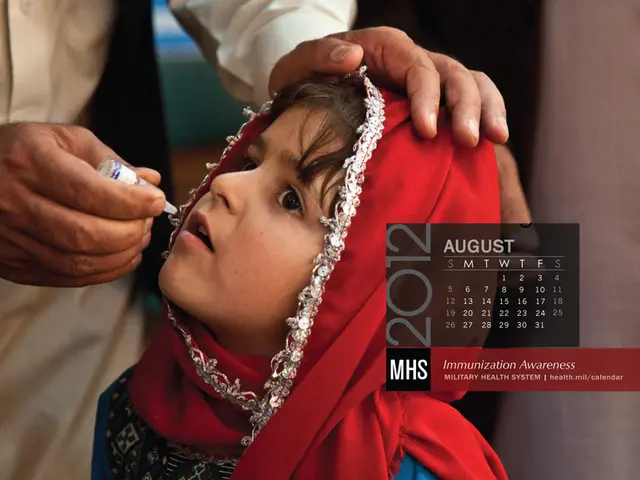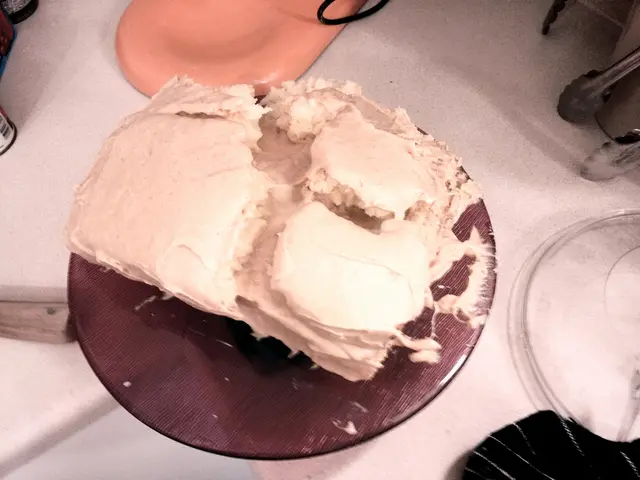Distinguishing Age Spots from Skin Cancer: Recognizing the Differences
Harmless Age Spots: A Comparison with Skin Cancer
As people age, they may develop age spots, which are benign marks on the skin. While age spots might resemble some forms of skin cancer or precancerous growths, they possess distinctive characteristics that distinguish them from malignant lesions.
Sun-exposed areas, such as the hands, face, or shoulders, are common sites for both age spots and skin cancer. By understanding the differences in appearance, symptoms, diagnosis, and treatment, individuals can identify when medical advice is necessary.
Age Spots
Age spots, also known as solar lentigines or liver spots, are discolored patches that are darker than the surrounding skin. These flat, smooth spots may emerge as yellow, brown, or gray and are defined with clear borders. Age spots typically appear on light skin, and their onset occurs from middle age or later.
These marks form due to the skin producing excess melanin to protect itself from UV radiation. Despite their unsightly appearance, age spots are harmless and do not require treatment.
Skin Cancer
Skin cancer is a type of cancer that can manifest in sun-exposed areas due to damage caused by UV radiation from the sun or tanning beds. Precisely, skin cancer happens when UV radiation or other environmental or genetic factors damage skin cells, causing them to mutate, grow, and spread at an accelerated rate.
Unlike age spots, skin cancer is a threat to a person's health and may spread to other parts of the body if left untreated. The three most common types of skin cancer are basal cell carcinoma, squamous cell carcinoma, and melanoma.
Another condition that can be mistaken for age spots is actinic keratosis, a precancerous growth. If left untreated, actinic keratosis may progress to skin cancer.
Can Age Spots Turn into Cancer?
Rest assured, age spots cannot transform into cancer. However, actinic keratosis, which can resemble age spots, is a precancerous growth. If left untreated, actinic keratosis may evolve into skin cancer.
Symptoms
The symptoms and appearances of age spots and skin cancer differ significantly. Normal age spot symptoms include:
- Flat, smooth texture
- Yellow, brown, or gray color
- Clear, defined borders
- Sizes ranging from a few millimeters to several centimeters
- General appearance on sun-exposed areas
Skin cancer symptoms may vary depending on the specific type, but they can include:
- Asymmetrical shape
- Irregular, blurred, or ragged edges
- Changing size, color, or shape
- Multiple colors on the same spot
- Pink, blue, purple, black, or brown coloring
- Raised, red patches
- Pale or yellow firm patches, similar to scars
- Pain, itching, oozing, or bleeding
- Crusty or scaly patches
- Raised edges with a lower center
Actinic keratosis symptoms include:
- Raised, rough, or scaly patches
- Red, gray, pink, or skin-colored patches
- Flat scaly patches that may resemble age spots
- Scaly, rough bumps resembling acne
- Pale or scaly patches on the lips
- Horn-like growths
When to Seek Medical Attention
Individuals should consult a doctor if they notice any skin symptoms that are also present in existing skin cancer or actinic keratosis symptoms. Early diagnosis of skin cancer increases the chances of successful treatment. Seek medical advice if a spot:
- Changes in color, shape, size, or location
- Does not resemble other marks on the skin
- Itches, crusts, scabs over, or bleeds and does not heal within four weeks
Diagnosis and Treatment
A doctor or dermatologist can diagnose age spots through visual examination. If uncertain or if other conditions, such as skin cancer or actinic keratosis, are suspected, the doctor may perform a skin biopsy.
Treatment for age spots is generally cosmetic and aimed at reducing their visibility. Possible treatment options include creams, lotions, laser treatments, cryosurgery, microdermabrasion, and chemical peeling.
For skin cancer, treatment depends on the specific type and stage of cancer, as well as an individual's overall health. When possible, doctors may surgically remove basal cell and squamous cell cancers; however, the positioning of the cancer may prevent surgical treatment in some cases.
Treatment options for skin cancer and actinic keratosis include topical therapies, radiation therapy, chemotherapy, immunotherapy, and systemic medication.
Key Differences
Understanding the differences between age spots, skin cancer, and actinic keratosis is essential for proper diagnosis and treatment. Significant differences in appearance, symptoms, and risks help individuals determine when to seek medical attention. Early detection of skin cancer facilitates successful treatment and improves health outcomes.
- In oncology, skin cancer is a concern for seniors, while age spots are harmless skin-conditions associated with sun-exposed areas in dermatology.
- While age spots, such as solar lentigines, have defined borders and a flat, smooth texture, skin cancer exhibits various irregularities like asymmetrical shapes, multiple colors, and raised, rough patches.
- Medical-conditions like skin cancer, melanoma, and actinic keratosis require medical-attention if symptoms, such as changing size, color, or shape, or bleeding without healing, are noticed. Age spots, on the other hand, do not necessitate treatment.
- For health-and-wellness, it's crucial for individuals to understand the differences between skin-conditions, such as age spots and skin cancer, and pursue preventative measures like skin-care and sun-protection to lower the risk of developing skin-care.
- Treatment for age spots involves cosmetic procedures like creams, lotions, and lasers, while medical treatments for skin cancer and actinic keratosis include topical therapies, radiation therapy, chemotherapy, immunotherapy, and systemic medications.








